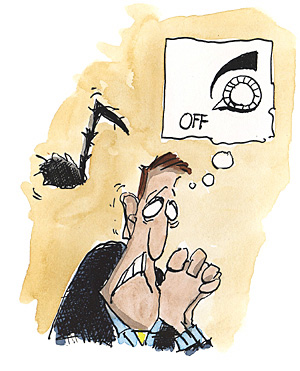According to the Mayo Clinic, epididymitis is inflammation
(either caused by a bacterial infection or sexually transmitted disease) of the
epididymis, a structure of the male reproductive tract responsible for
conducting the semen. Symptoms of epididymitis include scrotal tenderness,
testicular pain, painful intercourse or urination discomfort. Fortunately,
there are antibiotics that prevent complications such as the formation of pus
in the scrotum or shrinkage (atrophy) of the testicles tinnitus Problem.
According to the Mayo Clinic, epididymitis is inflammation
(either caused by a bacterial infection or sexually transmitted disease) of the
epididymis, a structure of the male reproductive tract responsible for
conducting the semen. Symptoms of epididymitis include scrotal tenderness,
testicular pain, painful intercourse or urination discomfort. Fortunately,
there are antibiotics that prevent complications such as the formation of pus
in the scrotum or shrinkage (atrophy) of the testicles.
Sulfamethoxazole and
trimethoprim
The resulting drug of the combination of sulfamethoxazole
and trimethoprim antibiotic is used to remove all kinds of bacteria. According
to Drugs.com, these drugs are also used to treat ear infections, bronchitis,
traveler's diarrhea, and Pneumocystis carinii pneumonia, a type of lung
infection that often occurs in people with weakened immune systems tinnitus miracle.
The most common side effects that occur with treatment with sulfamethoxazole
and trimethoprim are dizziness, ringing in the ears (tinnitus), joint pain and
sleep problems. Can also cause inflammation of the tongue and a sensation of
spinning. Contact a doctor if these symptoms last more than five days. Among
the most serious effects that can cause sulfamethoxazole and trimethoprim
include: shortness of breath, cough, ease to suffer bleeding and bruising, slow
heart rate and muscle weakness. Occurring bleeding and bruising easily is a
sign of a low level of platelets, which are cytoplasmic fragments involved in
blood clotting. Heart rate slow enough transport prevents blood to the organs,
in the case of the brain, this may result in the appearance of faint. These
drugs may also cause liver problems, whose symptoms include nausea, stomach
pain, dark urine, clay-colored stools, and skin or yellowing eyes. It may be
necessary to introduce a change in the dose of sulfamethoxazole and
trimethoprim in the case of persons suffering from certain diseases, such as
AIDS, kidney or liver disease, or folic acid deficiency asthma. This drug is
available in liquid form and should be taken exactly as prescribed by your
doctor.
Ceftriaxone
Ceftriaxone is an antibiotic belonging to the cephalosporin
used to treat a variety of infections, such as meningitis, a type of brain
infection. The most common side effects that may occur by the administration
are: headache, dizziness, itching or discharge, sweating, nausea, stomach pain
and vomiting. If any of the above symptoms last more than five days, contact
your doctor. Side effects may also appear more important, such as fever,
chills, white patches in the mouth and lips, blistering of the skin, decreased
urination and heartburn. Furthermore, ceftriaxone can cause muscle weakness,
numbness, or watery bloody diarrhea and confusion. Consult your doctor
immediately if the drug causes these effects on you. If you have gallbladder
problems, liver or kidney disease, stomach problems or malnutrition, you may
have to change the dose. According Drugs.com, patients are usually given an
injection of 250 mg intramuscularly (through muscle) in a single dose.
Azithromycin
Medline Plus reports that azithromycin is an antibiotic that
is also used to treat ailments such as pneumonia, sexually transmitted diseases
and ear infections, throat or skin. This drug belongs to a group of antibiotics
called macrolides and works by stopping the growth of bacteria. After taking
azithromycin may appear rash, diarrhea, stomach pain or vomiting. Consult a
doctor if these side effects last more than five or, at most, seven days. You
may see more serious problems for the administration of azithromycin, such as
yellowing of skin and eyes, hoarseness, difficulty breathing or swallowing, and
a rapid heart rate or irregular. Notifícale your doctor immediately the
appearance of these symptoms. If you are taking other drugs, such as
clarithromycin, digoxin or cyclosporine, you may have to modify the dose of
azithromycin. This drug, which is in the form of tablet or liquid taken daily
during a period of time ranging from one to five days.

No comments:
Post a Comment